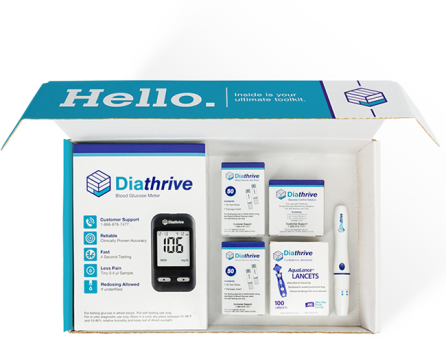
Here's how to navigate transitions of care with your diabetes in mind.
Changes in health care are commonplace and can happen more frequently than you’d like. While some of them can be minimized, others can’t. And one’s experience with them can run the gamut from smooth to clunky, and everything in between.
A transition is a time of change for anyone that’s preparing for a new way to receive care — be it switching between healthcare providers or insurance companies, locations of care, or levels of care. These instances are collectively known as transitions of care. Read on to learn more.
When Transitions of Care Happen
Transitions of care can happen when a person:
-
Ages out of care - leaving a pediatric endocrinology practice for adult care
-
Leaves the nest - going to grade school, college, or starting life as an adult
-
Relocates - moving to a new city or state
-
Loses insurance - often when losing or changing jobs
-
Starts on a new insurance policy - dictating a new in-network provider
-
Loses a provider - a provider retires or relocates their practice
-
Changes to a specialist - switching care to a diabetes specialist (endocrinologist) from primary care provider
-
Needs care assistance - moving from independent living to assisted living
Any transition can be difficult and potentially disruptive, so they’re best when kept to a minimum. Starting from square one is admittedly hard, and who wants to repeat that regularly?
Common Concerns About Transitions of Care
If you’ve recently been through a care transition, I’m certain I don’t need to dissect this for you. There’s a list of reasons why people aren’t game for changes in their care or for the unpredicted challenges that can come from a combination of factors, such as a new health insurance policy and a new provider.
So, it’s reasonable, and understandable, if it’s not something you’re looking forward to, unless it brings new opportunities for your care that you’re excited about.
What’s the end goal with transitions of care? A seamless switch that doesn’t disrupt one’s access to care and health needs. As you can guess, this can be a high-risk time. Awareness and action is the name of the game, because the potential for lingering insufficiencies, pre-approvals, and communication gaps between providers is real.
When you add care for a chronic condition such as diabetes into the mix, it adds another layer of complexities. With potential delays in the delivery of necessary healthcare services, supplies, and medications, gaps in care can be very concerning, as are frustrations that can lead to healthcare aversions. Meaning that you give up before your needs are met. No one ever wants this to happen, so that’s why we talk about self-advocacy.
Steps that you can take to to help with transitions of care include:
-
Don’t take no for an answer - it may take many phone calls and a lot of patience
-
Get copies of your records - hand-carry them to the new office
-
Ask questions - understand steps that you can take to speed up processes
-
Call providers - ask your new durable medical equipment supplier, pharmacy, prescription delivery service, and healthcare provider’s office to understand specific and necessary steps
-
Talk with your pharmacist - If medication costs have increased, ask a pharmacist about rebate programs
-
Ask your insurance company about continuation of care clauses - find out if you can stay with your current provider by submitting the proper paperwork
-
Never run out of life saving medications - this is a medical emergency and you should seek immediate medical care if a pharmacist can’t help you
With all of that being said, if you feel like you’re doing everything right — and still don’t have answers or the help you need— a good rule of thumb is to move up the chain of command. This means that there are other people you can tap into for help.
If you’re not getting anywhere, talk to:
-
The practice manager at both your old and new provider’s office
-
People in the hospital (if you’re a patient) that can help: a charge nurse, diabetes educator, patient advocate, or social worker
-
Your insurance company’s 24-hour nurse help line or ask for a nurse case manager
-
JDRF or the American Diabetes Association for personal support
It’s important to remember that you’re not alone. Everyone with diabetes will experience changes in care — and all of the emotions that go along with them. There are numerous people available to help with patient advocacy and getting your needs met. Please, never go without your life-saving medications. Things will fall into place, and there are resources to help you through this time of change.





